Related Research Articles

Edward Adrian Wilson was an English polar explorer, ornithologist, natural historian, physician and artist.

Fram ("Forward") is a ship that was used in expeditions of the Arctic and Antarctic regions by the Norwegian explorers Fridtjof Nansen, Otto Sverdrup, Oscar Wisting, and Roald Amundsen between 1893 and 1912. It was designed and built by the Scottish-Norwegian shipwright Colin Archer for Fridtjof Nansen's 1893 Arctic expedition in which the plan was to freeze Fram into the Arctic ice sheet and float with it over the North Pole.

Apsley George Benet Cherry-Garrard was an English explorer of Antarctica. He was a member of the Terra Nova expedition and is acclaimed for his 1922 account of this expedition, The Worst Journey in the World.
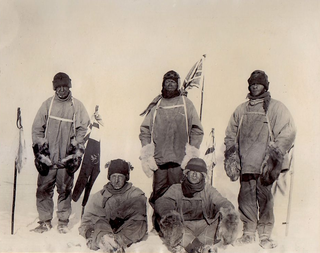
Henry Robertson Bowers was one of Robert Falcon Scott's polar party on the ill-fated Terra Nova expedition of 1910–1913, all of whom died during their return from the South Pole.

William Lashly was a Royal Navy seaman who served as lead stoker on both the Discovery expedition and the Terra Nova expedition to Antarctica, for which he was awarded the Polar Medal. Lashly was also recognised with the Albert Medal for playing a key role in saving the life of a comrade on the second of the two expeditions.

The Terra NovaExpedition, officially the British Antarctic Expedition, was an expedition to Antarctica which took place between 1910 and 1913. Led by Captain Robert Falcon Scott, the expedition had various scientific and geographical objectives. Scott wished to continue the scientific work that he had begun when leading the Discovery Expedition from 1901 to 1904, and wanted to be the first to reach the geographic South Pole.

George Murray Levick was a British Antarctic explorer, naval surgeon and founder of the Public Schools Exploring Society.
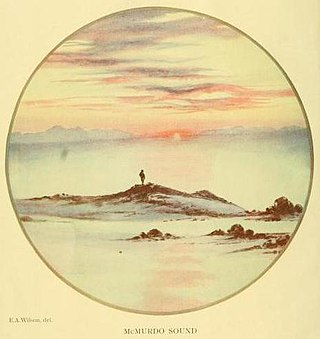
The Worst Journey in the World is a 1922 memoir by Apsley Cherry-Garrard of Robert Falcon Scott's Terra Nova expedition to the South Pole in 1910–1913. It has earned wide praise for its frank treatment of the difficulties of the expedition, the causes of its disastrous outcome, and the meaning of human suffering under extreme conditions.
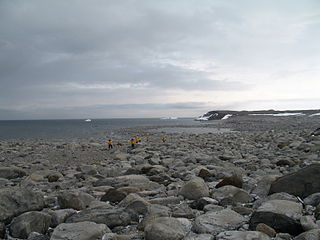
Inexpressible Island is a small, rocky island in Terra Nova Bay, Victoria Land, Antarctica.
Minna Bluff is a rocky promontory at the eastern end of a volcanic Antarctic peninsula projecting deep into the Ross Ice Shelf at 78°31′S166°25′E. It forms a long, narrow arm which culminates in a south-pointing hook feature, and is the subject of research into Antarctic cryosphere history, funded by the National Science Foundation, Office of Polar Programs.
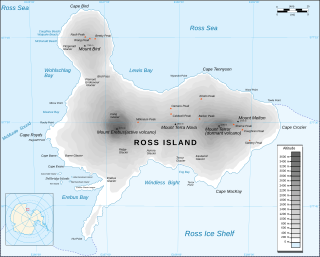
Cape Crozier is the most easterly point of Ross Island in Antarctica. It was discovered in 1841 during James Clark Ross's expedition of 1839 to 1843 with HMS Erebus and HMS Terror, and was named after Francis Crozier, captain of HMS Terror. The extinct volcano Mount Terror, also named during the Ross expedition, rises sharply from the Cape to a height of 3,230 m (10,600 ft), and the edge of the Ross Ice Shelf stretches away to its east.

Patrick Keohane was an Irish member of Robert Falcon Scott's Antarctic expedition of 1910–1913, the Terra Nova expedition.
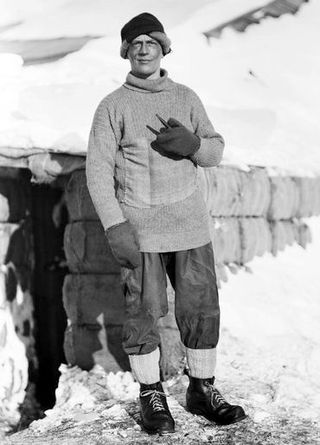
Edward Leicester Atkinson, was a Royal Navy surgeon and Antarctic explorer who was a member of the scientific staff of Captain Scott's Terra Nova Expedition, 1910–13. He was in command of the expedition's base at Cape Evans for much of 1912, and led the party which found the tent containing the bodies of Scott, "Birdie" Bowers and Edward Wilson. Atkinson was subsequently associated with two controversies: that relating to Scott's orders concerning the use of dogs, and that relating to the possible incidence of scurvy in the polar party. He is commemorated by the Atkinson Cliffs on the northern coast of Victoria Land, Antarctica, at 71°18′S168°55′E.

Between December 1911 and January 1912, both Roald Amundsen and Robert Falcon Scott reached the South Pole within five weeks of each other. But while Scott and his four companions died on the return journey, Amundsen's party managed to reach the geographic south pole first and subsequently return to their base camp at Framheim without loss of human life, suggesting that they were better prepared for the expedition. The contrasting fates of the two teams seeking the same prize at the same time invites comparison.
The Worst Journey in the World is a 2007 BBC Television docudrama based on the memoir of the same name by polar explorer Apsley Cherry-Garrard. Narrator Barry Letts, best known for his tenure as the producer of Doctor Who, played Cherry-Garrard in the 1948 film Scott of the Antarctic.

The British Antarctic explorer Robert Falcon Scott became the subject of controversy when, more than 60 years after his death on the return march from the South Pole in 1912, his achievements and character came under sustained attack.
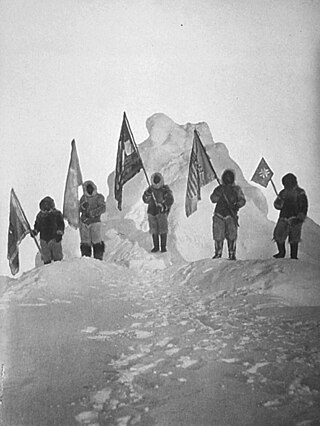
Polar exploration is the process of exploration of the polar regions of Earth – the Arctic region and Antarctica – particularly with the goal of reaching the North Pole and South Pole, respectively. Historically, this was accomplished by explorers making often arduous travels on foot or by sled in these regions, known as a polar expedition. More recently, exploration has been accomplished with technology, particularly with satellite imagery.

Mummy Pond is a pond between Suess and Lacroix Glaciers in Taylor Valley, Victoria Land. So named by T.L. Pewe, U.S. geologist who visited the area in December 1957, because of the mummified seals found around the pond.
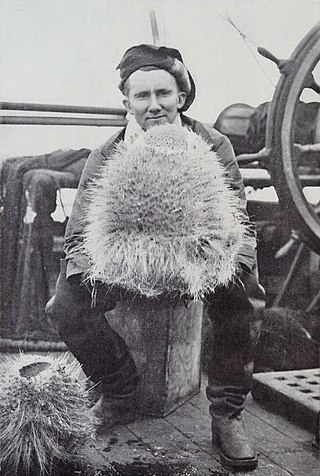
Denis Gascoigne Lillie was a British biologist who participated in the Terra Nova Expedition (1910–1913) to the Antarctic. He collected numerous marine animals as well as plants and fossils–many of which were new to science–and published scientific papers on whales, fossils, and medicine. He received the Polar Medal along with other Terra Nova members in 1913. He was also a noted caricaturist who made cartoons of professors, colleagues, and friends: some of his caricatures are collected in the National Portrait Gallery. He worked as a government bacteriologist during World War I and then suffered a severe mental breakdown, spending three years at Bethlem Royal Hospital and never fully recovering. He is commemorated in the names of several marine organisms as well as Lillie Glacier in Antarctica.
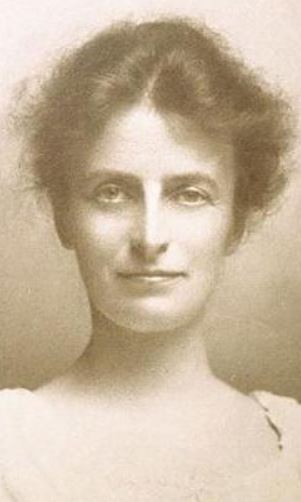
Oriana Fanny Wilson, was a British naturalist and humanitarian who received the Commander of the British Empire for her services during the First World War. Her husband was the polar explorer Edward Adrian Wilson.
References
- ↑ Wheeler, Sara (1997). Terra Incognita: Travels in Antarctica. p. 297.
- ↑ Lucy Moore (4 November 2001). "The nice man cometh Sara Wheeler brings her Antarctic experience to bear on her biography of the reserved but passionate polar explorer Apsley Cherry-Garrard". The Observer. Retrieved 22 August 2012.
- ↑ "All Fellows:W". Royal Society of Literature. Archived from the original on 12 March 2010. Retrieved 19 February 2012.
- ↑ "The London Library and The London Library Trust Annual Reports and Financial Statements 2009–2010" (PDF). The London Library. Retrieved 19 February 2012.
- ↑ Gill Hornby (26 September 2009). "The Magnetic North – Notes from the Arctic Circle by Sara Wheeler: review". The Telegraph. Retrieved 22 August 2012.
- ↑ "BBC Radio 4 Programmes – To Strive and Seek". BBC Online . Retrieved 19 February 2012.
- ↑ Sattin, Anthony. "O My America! by Sara Wheeler". The Spectator. Retrieved 16 March 2013.